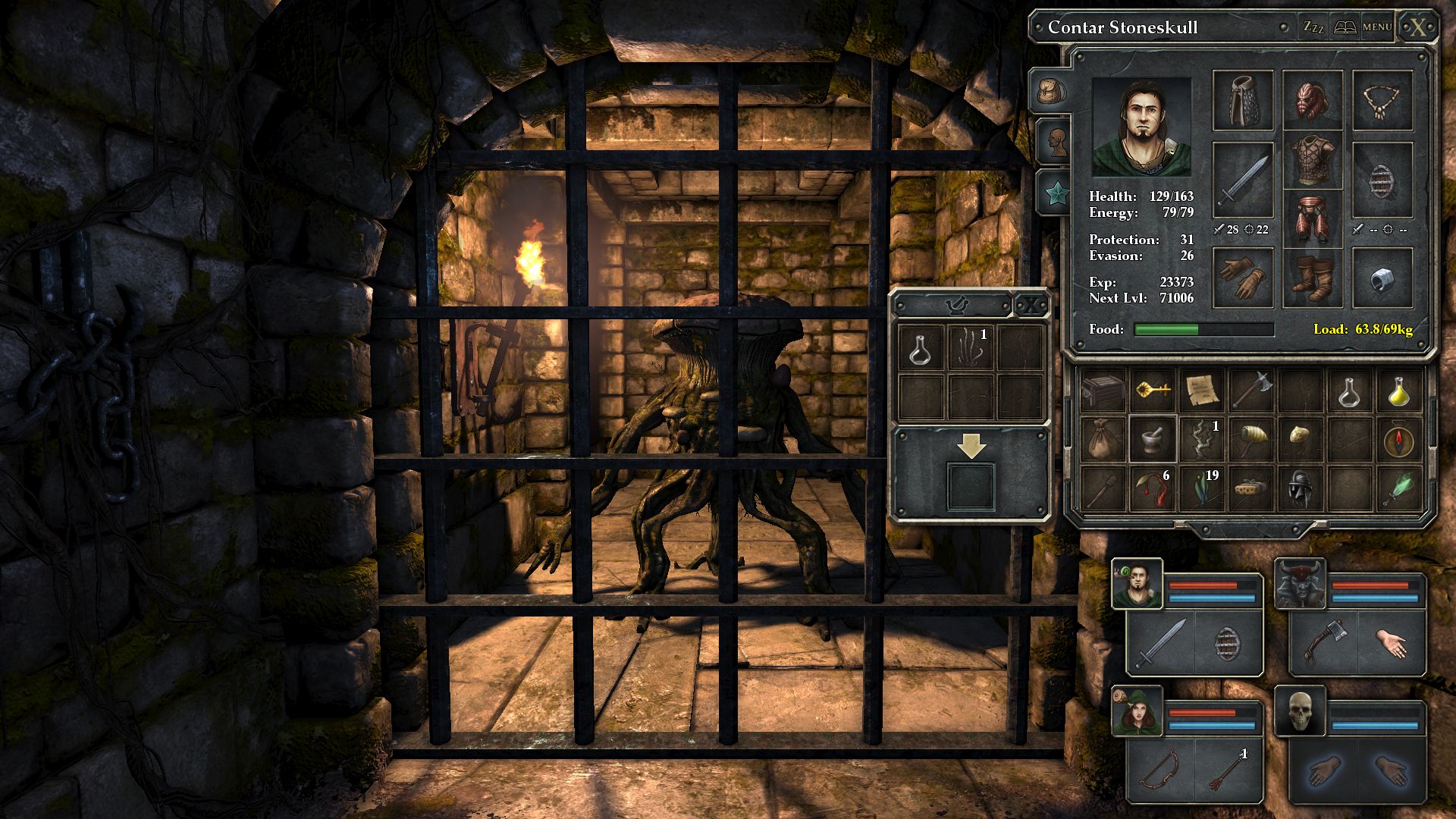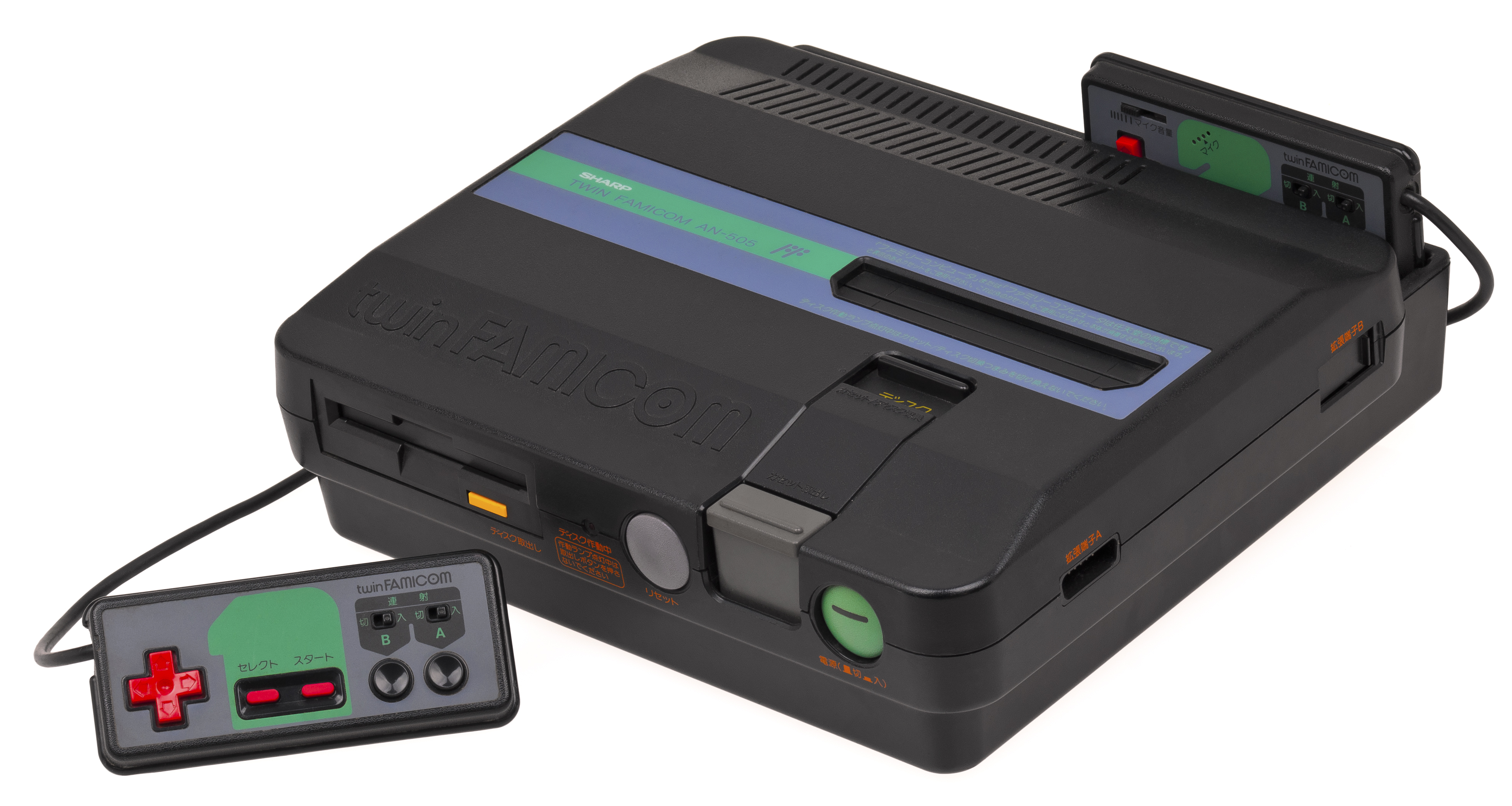|
Puyo Puyo (series)
''Puyo Puyo'' (ぷよぷよ), previously known as ''Puyo Pop'' outside Japan, is a series of tile-matching video games created by Compile. Sega has owned the franchise since 1998, with games after 2001 being developed by Sonic Team. ''Puyo Puyo'' was created as a spin-off franchise to ''Madō Monogatari'' (''Sorcery Saga''), a series of first-person dungeon crawler role-playing games by Compile from which the ''Puyo Puyo'' characters originated. Gameplay Generally, the objective of ''Puyo Puyo'' games is to defeat your opponent by causing the third column from the left of their side of the screen to become filled with ''Puyo''. Puyo are round, slime-like creatures that, in most variations of the game, fall from the top of the screen in groups of two, three, and four. The pieces can be moved, dropped, and rotated as they fall. The piece falls until it reaches another Puyo or the bottom of the screen. When four or more Puyo of the same color line up adjacent to each other, the Pu ... [...More Info...] [...Related Items...] OR: [Wikipedia] [Google] [Baidu] |
Compile (software Company)
was a Japanese video game developer, most notable for having developed the ''Puyo Puyo'' series, a franchise derived from the ''Madō Monogatari'' series. On 6 November 2003, the company suffered from bankruptcy. As a result, key staff moved to Compile Heart, the company's spiritual successor, whereas shoot-'em-up staff moved to MileStone Inc. The Compile trademark is being used as a brand label by Compile Heart to promote merchandise and games based on Compile properties. As of 2010, Compile Heart entered into a licensing deal with D4 Enterprise to create new video games based on franchises from Compile properties. This agreement does not affect the rights to the ''Puyo Puyo'' series as Sega retains ownership of the property. In April 2016, Niitani started a new successor company to Compile, Compile Maru. The company launched the game '' Nyoki Nyoki: Tabidachi Hen'' for Nintendo 3DS on the Nintendo eShop with a follow-up scheduled for Nintendo Switch. ''Puyo Puyo'' Compile de ... [...More Info...] [...Related Items...] OR: [Wikipedia] [Google] [Baidu] |
Puyo Puyo! 15th Anniversary
is a sub-story of the ''Puyo Puyo'' series, developed by Sonic Team and published by Sega for the Nintendo DS, PlayStation 2, PlayStation Portable, and Wii. It has not been released outside of Japan for any consoles. This is the first ''Puyo Puyo'' game to be released on the Wii console. Plot Ms. Accord, the teacher at Primp Magic School, informs Sig of an upcoming tournament where the reward is a medal that will grant any single wish. Sig witnesses six comets fall down onto Earth, but decides to ignore them and joins the competition. It turns out that the comets are actually six characters from the '' Madou Monogatari'' series, who serve as boss characters in the story modes. Characters As ''Puyo Puyo! 15th Anniversary'' was created to commemorate the fifteenth anniversary of ''Puyo Puyo'', it includes most of the ''Fever'' characters, plus six characters originating from the ''Madou Monogatari'' series. There are a total of twenty-two characters in this game. Gameplay ... [...More Info...] [...Related Items...] OR: [Wikipedia] [Google] [Baidu] |
Arcade Video Game
An arcade video game takes player input from its controls, processes it through electrical or computerized components, and displays output to an electronic monitor or similar display. Most arcade video games are coin-operated, housed in an arcade cabinet, and located in amusement arcades alongside other kinds of arcade games. Until the late 1990s, arcade video games were the largest and most technologically advanced segment of the video game industry. Early prototypical entries '' Galaxy Game'' and '' Computer Space'' in 1971 established the principle operations for arcade games, and Atari's '' Pong'' in 1972 is recognized as the first successful commercial arcade video game. Improvements in computer technology and gameplay design led to a golden age of arcade video games, the exact dates of which are debated but range from the late 1970s to mid-1980s. This golden age includes '' Space Invaders'', '' Pac-Man'', and '' Donkey Kong''. The arcade industry had a resurgence fr ... [...More Info...] [...Related Items...] OR: [Wikipedia] [Google] [Baidu] |
Role-playing Video Game
A role-playing video game (commonly referred to as simply a role-playing game or RPG, as well as a computer role-playing game or CRPG) is a video game genre where the player controls the actions of a character (or several party members) immersed in some well-defined world, usually involving some form of character development by way of recording statistics. Many role-playing video games have origins in tabletop role-playing games#AdRol, Adams, Rollings 2003, p. 347 and use much of the same :Role-playing game terminology, terminology, Campaign setting, settings and Game mechanics, game mechanics. Other major similarities with pen-and-paper games include developed story-telling and narrative elements, player character development, complexity, as well as replay value and immersion. The electronic medium removes the necessity for a gamemaster and increases combat resolution speed. RPGs have evolved from simple Text-based game, text-based console-window games into visually rich 3D com ... [...More Info...] [...Related Items...] OR: [Wikipedia] [Google] [Baidu] |
Tokuma Shoten
is a publisher in Japan, headquartered in Shinagawa, Tokyo. The company was established in 1954 by Yasuyoshi Tokuma in Minato, Tokyo. The company’s product portfolio includes music publishing, video game publishing, movies, anime, magazines, manga and books. Companies that were part of Tokuma Shoten include Studio Ghibli, Daiei Film and the record label Tokuma Japan Communications. After the founder of the company, Yasuyoshi Tokuma died on September 20, 2000, an asset management occurred. Tokuma Shoten executed a corporate spin-off with Studio Ghibli, turning the company’s anime division as a separate company again in 2005. Tokuma Shoten sold off Tokuma Japan Communications to Daiichi Kosho in October 2001, and Daiei Films was purchased by Kadokawa Corporation in November 2002. Since 2005, the company has streamlined itself to focus solely on the publication of print media and the airing of its adapted properties to TV and feature film. On 17 March 2017, the company was ... [...More Info...] [...Related Items...] OR: [Wikipedia] [Google] [Baidu] |
Family Computer Disk System
The commonly shortened to the Famicom Disk System or just Disk System, is a peripheral for Nintendo's Family Computer home video game console, released only in Japan on February 21, 1986. It uses proprietary floppy disks called "Disk Cards" for cheaper data storage and it adds a new high-fidelity sound channel for supporting Disk System games. Fundamentally, the Disk System serves simply to enhance some aspects already inherent to the base Famicom system, with better sound and cheaper gamesthough with the disadvantages of high initial price, slow speed, and lower reliability. However, this boost to the market of affordable and writable mass storage temporarily served as an enabling technology for the creation of new types of video games. This includes the vast, open world, progress-saving adventures of the best-selling ''The Legend of Zelda'' (1986) and '' Metroid'' (1986), games with a cost-effective and swift release such as the best-selling '' Super Mario Bros. 2'', and n ... [...More Info...] [...Related Items...] OR: [Wikipedia] [Google] [Baidu] |
MSX2
MSX is a standardized home computer architecture, announced by Microsoft and ASCII Corporation on June 16, 1983. It was initially conceived by Microsoft as a product for the Eastern sector, and jointly marketed by Kazuhiko Nishi, then vice-president at Microsoft and director at ASCII Corporation. Microsoft and Nishi conceived the project as an attempt to create unified standards among various home computing system manufacturers of the period, in the same fashion as the VHS standard for home video tape machines. MSX systems were popular in Japan and several other countries. Eventually, 9 million MSX units were sold worldwide, including in Japan alone. Despite Microsoft's involvement, few MSX-based machines were released in the United States. The very first commercial MSX for the public was a Mitsubishi ML-8000, released on October 21, 1983, thus marking its official "release date". The meaning of the acronym MSX remains a matter of debate. In 2001, Kazuhiko Nishi recalle ... [...More Info...] [...Related Items...] OR: [Wikipedia] [Google] [Baidu] |
Puyo Puyo Champions
''Puyo Puyo Champions'' ( ), is a puzzle video game developed by Sonic Team and published by Sega for the Nintendo Switch, Xbox One, PlayStation 4, and in 2019 for Microsoft Windows (through the Steam platform). Released in Japan under the name ''Puyo Puyo eSports'', the game was localized for international release in 2019 under the name ''Puyo Puyo Champions''. As with '' Puyo Puyo Tetris'', the international release features English characters voices, allowing the player to change between the original Japanese and the English localized voices; the game interface is also available in French, German, Italian, Spanish, Traditional Chinese, Simplified Chinese and Korean. Gameplay The game features two separate gameplay rules based on the earlier games: * ''Puyo Puyo Tsu'' * ''Puyo Puyo Fever'' The game modes available include: * Multiplayer, the main focus of the game; can be played locally on the same device or via LAN, or with other players online, casually or competitivel ... [...More Info...] [...Related Items...] OR: [Wikipedia] [Google] [Baidu] |
Puyo Puyo Chronicle
is a puzzle video game developed by Sonic Team and published by Sega for the Nintendo 3DS, to celebrate the 25th anniversary of the ''Puyo Puyo'' series. It is the first release featuring 3D models for characters instead of the traditional 2D. In addition of the traditional mechanics, it introduces role-playing elements, allowing to have up to three allies in team, as well as over 60 side missions and introduces a new protagonist, Ally. Modes ''Puyo Puyo Chronicle'' offers a series of mechanics and modes present in previous releases, as well as a story mode in RPG format. RPG mode The main mode. Starring Arle Nadja, who was attracted by a mysterious glow from a book, being moved to another world. Arle will meet Ally, who will accompany her on her adventure for that new world. The story mode has a number of features: Quest In "RPG mode", the game progresses basically by achieving "missions" that occur in various places. The search has a "main search" related to the prog ... [...More Info...] [...Related Items...] OR: [Wikipedia] [Google] [Baidu] |
Puyo Puyo Tetris
is a puzzle video game developed by Sonic Team and published by Sega. The game is a crossover between the ''Puyo Puyo'' series and the ''Tetris'' franchise, and features various gameplay modes incorporating both aspects. The game includes characters modeled and named after the seven Tetrominos, which are different puzzle pieces each made of four blocks. ''Puyo Puyo Tetris'' was the first ''Tetris''-related title published by Sega since the PlayStation 2 game ''Sega Ages 2500: Tetris Collection'', an installment in the ''Sega Ages'' series, in 2006. ''Puyo Puyo Tetris'' adopts the guidelines used in contemporary ''Tetris'' games, so the rotation patterns and colors of the Tetrominoes differ from Sega's previous releases. ''Puyo Puyo Tetris'' was released for the Nintendo 3DS, Wii U, PlayStation Vita and PlayStation 3 in Japan in February 2014, followed by versions for PlayStation 4 and Xbox One in December 2014, and Nintendo Switch in March 2017. The PlayStation 4 and Nintend ... [...More Info...] [...Related Items...] OR: [Wikipedia] [Google] [Baidu] |


